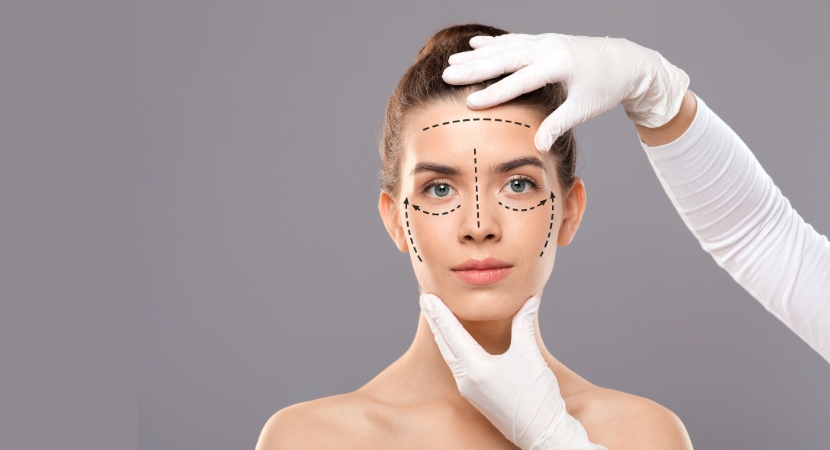
There are several types of facelift surgeries. Below, we list three types that are most popular worldwide. All types of facelift surgeries mentioned are certified procedures, but the surgeon is always the one who advises patients on the best facelift surgery that will provide them with the best results.
Some of the most popular ones include: SMAS Facelift, Deep Plane Facelift and MACS Facelift
SMAS Facelift
The SMAS facelift, also known as SMAS lifting or deep rhytidectomy, is a procedure that goes beneath the fibrous layer covering the muscles called SMAS (superficial musculoaponeurotic system). As it delves very deeply, there is a higher risk of nerve damage compared to other types of facelifts. The SMAS lift is suitable for individuals dealing with sagging skin on the neck and face but still have some skin elasticity and a defined bone structure.
Regarding the results of the SMAS facelift technique, it primarily lifts the lower part of the face (especially the neck and jawline). As a result, the skin becomes smoother, tightened, and further taut within a year.
Deep Plane Facelift
The SMAS facelift involves only the upper layers of the skin, but the truth is that some aging effects affect much deeper layers. Here, the deep plane facelift is much more effective, reaching all layers of the skin and underlying tissues without separating them. Additionally, it does not provoke any strain or tension on the muscles or skin, which can be an issue with SMAS lifting. The duration of the procedure, incision sites, and overall aspects are the same for both SMAS and deep plane facelifts. Moreover, the recovery time for a deep plane facelift is similar to other types of facelifts. The results of the deep plane facelift are truly natural and subtle, so it is essential for patients to have realistic expectations for the procedure.
See the comparison of SMAS, Deep Plane, and MACS Facelifts below:
| SMAS FACELIFT | DEEP PLANE FACELIFT | MACS FACELIFT | |
| Facelift Type | Full Facelift | Full Facelift | Mini Facelift |
| Areas Covered | Two-Thirds of the face | Two-Thirds of the face | Lower part of the face |
| Techniques | Involves only the layers of skin just below the surface. | Involves the deep layers of the skin with the tissues beneath them. | Involves the deep layers of the skin with the tissues beneath them. |
| Incisions | The incisions begin around the hairline at the temple, extend down around the ear, and then continue behind the ear towards the hairline. | The incisions start around the hairline at the temple, extend to the ear, then behind the ear to the hairline. | The incisions start around the hairline at the temple and go up to the ear (but do not reach the back of the ear or the posterior hairline). |
| Anesthesia | General | General | Local with sedation or general anesthesia depending on the complexity. |
| Procedure Duration | About 4 hours | About 4 hours | About 2,5 hours |
| Recovery | Up to 3 weeks | Up to 3 weeks | 1-2 weeks |
| Results | Long-lasting, but sometimes the appearance can be "too young," as it may appear unnatural. | Long-lasting, very subtle, and natural-looking. | Around 10 years on average. |


